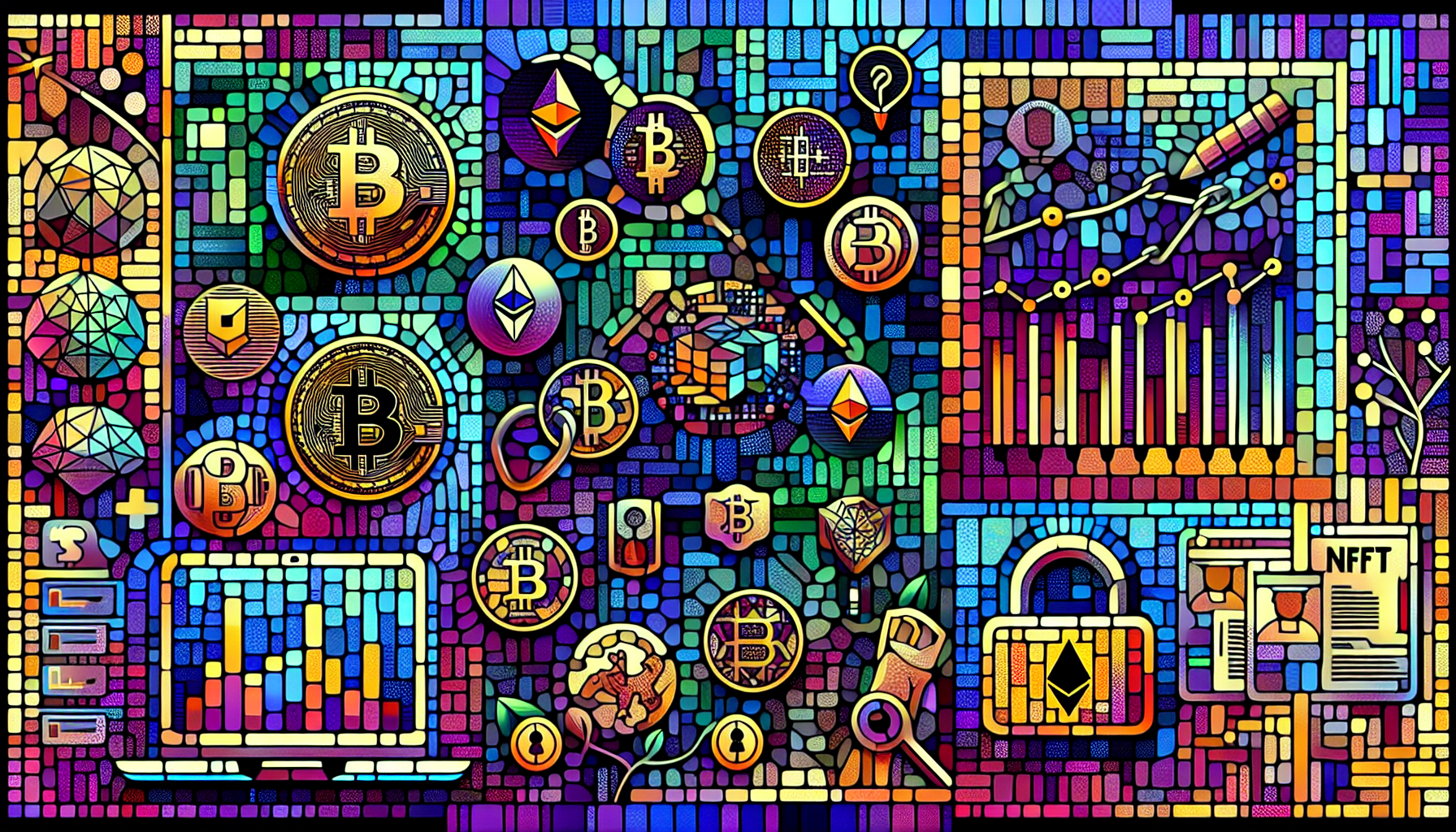NFTs: What They Are and How They Work

- Understanding the Basics of NFTs
- Exploring the World of Non-Fungible Tokens
- The Rise of NFTs in the Digital Age
- Demystifying the Concept of NFTs
- A Closer Look at How NFTs Function
- The Future of NFTs: Trends and Opportunities
Understanding the Basics of NFTs
NFTs, or Non-Fungible Tokens, have gained significant popularity in recent years as a new form of digital asset. These unique tokens represent ownership of a specific item or piece of content on the blockchain. Unlike cryptocurrencies such as Bitcoin or Ethereum, which are fungible and can be exchanged on a one-to-one basis, NFTs are one-of-a-kind and cannot be replicated.
One key aspect of NFTs is their ability to provide proof of ownership and authenticity for digital assets. This is achieved through the use of smart contracts, which are self-executing contracts with the terms of the agreement directly written into code. When an NFT is created, it is assigned a unique identifier that is stored on the blockchain, making it tamper-proof and verifiable.
Another important feature of NFTs is their ability to be bought, sold, and traded on various online marketplaces. This has created a new ecosystem for digital artists, musicians, and creators to monetize their work directly, without the need for traditional intermediaries. Additionally, NFTs have opened up new possibilities for collectors to own rare and unique digital items that were previously difficult to authenticate.
Overall, understanding the basics of NFTs is essential for anyone looking to participate in this emerging digital economy. By grasping the concept of non-fungibility, ownership verification, and the potential for new forms of digital ownership, individuals can navigate the world of NFTs with confidence and explore the exciting opportunities that this technology has to offer.
Exploring the World of Non-Fungible Tokens
Exploring the world of non-fungible tokens (NFTs) opens up a whole new realm of possibilities in the digital space. NFTs are unique digital assets that are indivisible and cannot be replicated, making them one-of-a-kind in the digital world. These tokens are built on blockchain technology, which ensures their authenticity and ownership.
When it comes to NFTs, the possibilities are endless. From digital art and collectibles to virtual real estate and even tweets, NFTs can represent a wide range of assets. This has opened up a whole new market for creators and collectors alike, allowing them to buy, sell, and trade digital assets in a secure and transparent manner.
One of the key features of NFTs is their ability to prove ownership and authenticity. Each NFT is stored on a blockchain, which acts as a digital ledger that records all transactions related to the token. This means that the ownership of an NFT can be easily verified, providing a level of trust and security that is unparalleled in the digital world.
The Rise of NFTs in the Digital Age
The rise of NFTs in the digital age has been nothing short of remarkable. Non-fungible tokens have revolutionized the way we perceive and interact with digital assets, offering a new level of ownership and authenticity in the virtual world. NFTs have gained immense popularity in recent years, with artists, musicians, and even sports teams jumping on the bandwagon to create and sell their unique digital collectibles.
One of the key factors driving the popularity of NFTs is their ability to provide proof of ownership and scarcity in the digital realm. Unlike traditional digital assets that can be easily replicated or shared, NFTs are one-of-a-kind tokens that are stored on a blockchain, making them tamper-proof and verifiable. This has opened up a whole new world of possibilities for creators and collectors alike, allowing them to buy, sell, and trade digital assets with confidence.
Another reason for the surge in NFT adoption is the growing interest in decentralized finance (DeFi) and blockchain technology. As more people become familiar with cryptocurrencies and smart contracts, they are starting to see the potential of NFTs as a way to tokenize and monetize digital content. This has led to a boom in NFT marketplaces and platforms, where users can buy and sell a wide range of digital assets, from artwork and music to virtual real estate and in-game items.
Overall, the rise of NFTs in the digital age represents a paradigm shift in how we perceive and value digital assets. With their unique properties and potential for innovation, NFTs are poised to reshape the way we create, consume, and interact with digital content in the years to come. Whether you’re an artist looking to showcase your work, a collector seeking rare digital memorabilia, or simply curious about the future of digital ownership, NFTs offer a world of possibilities waiting to be explored.
Demystifying the Concept of NFTs
NFTs, or non-fungible tokens, have been gaining popularity in the digital world, but many people still find the concept confusing. In simple terms, NFTs are unique digital assets that are stored on a blockchain, making them one-of-a-kind and not interchangeable like cryptocurrencies such as Bitcoin or Ethereum.
Unlike physical assets like art or real estate, NFTs exist purely in the digital realm, allowing for ownership and provenance to be easily verified. This has opened up a whole new world of possibilities for creators, artists, and collectors to buy, sell, and trade digital assets in a secure and transparent manner.
One of the key features of NFTs is their ability to represent ownership of digital content, such as art, music, videos, and even virtual real estate. By tokenizing these assets, creators can prove authenticity and scarcity, making them more valuable to collectors. This has led to a boom in the NFT market, with some digital artworks selling for millions of dollars.
While the concept of NFTs may seem complex at first, it is essentially a way to create and trade unique digital assets using blockchain technology. By understanding the basics of how NFTs work, you can take advantage of this exciting new market and explore the possibilities it offers for creators and collectors alike.
A Closer Look at How NFTs Function
NFTs, or non-fungible tokens, have gained significant popularity in recent years as a new way to buy and sell digital assets. But how exactly do NFTs function? Let’s take a closer look at the process.
One key aspect of NFTs is that each token is unique and cannot be replicated. This uniqueness is what sets NFTs apart from other types of digital assets, such as cryptocurrencies. When an NFT is created, it is assigned a unique identifier that distinguishes it from all other tokens on the blockchain.
Another important feature of NFTs is their ability to be bought, sold, and traded on various online marketplaces. These marketplaces use smart contracts to facilitate transactions between buyers and sellers. Smart contracts are self-executing contracts with the terms of the agreement directly written into code. This ensures that transactions are secure and transparent.
Additionally, NFTs are typically stored on a blockchain, which is a decentralized and distributed digital ledger. This means that the ownership and transaction history of an NFT are publicly verifiable and cannot be altered. This transparency is crucial for establishing the authenticity and provenance of a digital asset.
Overall, NFTs function by leveraging blockchain technology to create unique digital assets that can be bought, sold, and traded securely on online marketplaces. Their uniqueness, smart contract functionality, and transparency make them an exciting new development in the world of digital ownership.
The Future of NFTs: Trends and Opportunities
The future of NFTs looks promising, with various trends and opportunities emerging in this space. One trend that is gaining traction is the use of NFTs in the gaming industry. Game developers are increasingly incorporating NFTs into their games, allowing players to own unique in-game assets that can be bought, sold, and traded. This has the potential to revolutionize the gaming industry by giving players true ownership of their digital items.
Another trend is the use of NFTs in the art world. Artists are now creating digital artworks that are tokenized as NFTs, allowing them to sell their work directly to collectors without the need for intermediaries. This has opened up new opportunities for artists to monetize their creations and reach a global audience.
In addition to gaming and art, NFTs are also being used in the music industry. Musicians are releasing albums and songs as NFTs, giving fans the opportunity to own exclusive digital collectibles tied to their favorite artists. This has the potential to create new revenue streams for musicians and change the way music is consumed and shared.
Overall, the future of NFTs is bright, with endless possibilities for innovation and growth. As more industries adopt this technology, we can expect to see even more creative use cases and opportunities emerge. Whether it’s in gaming, art, music, or beyond, NFTs are poised to revolutionize the way we think about ownership and digital assets.




